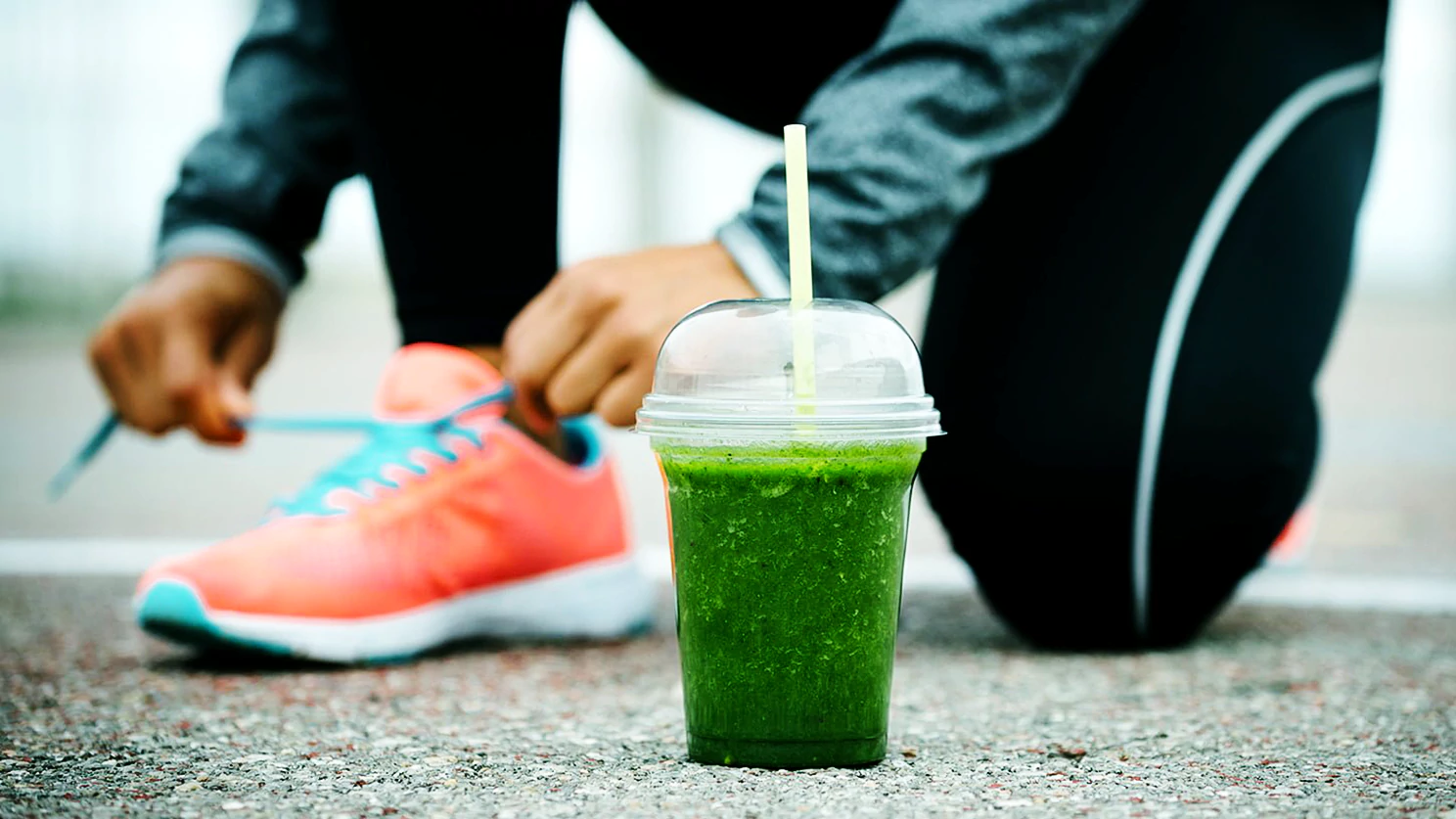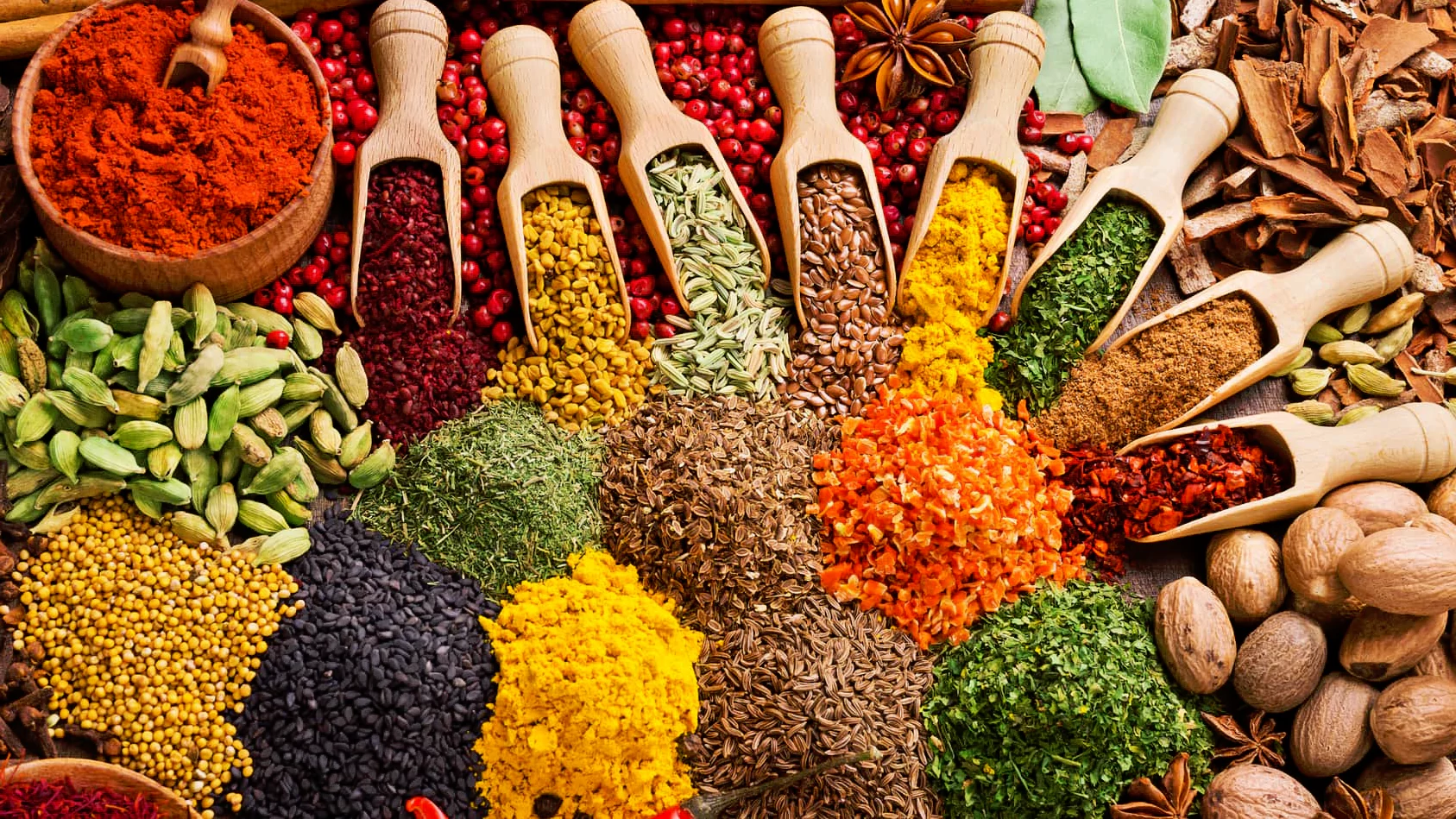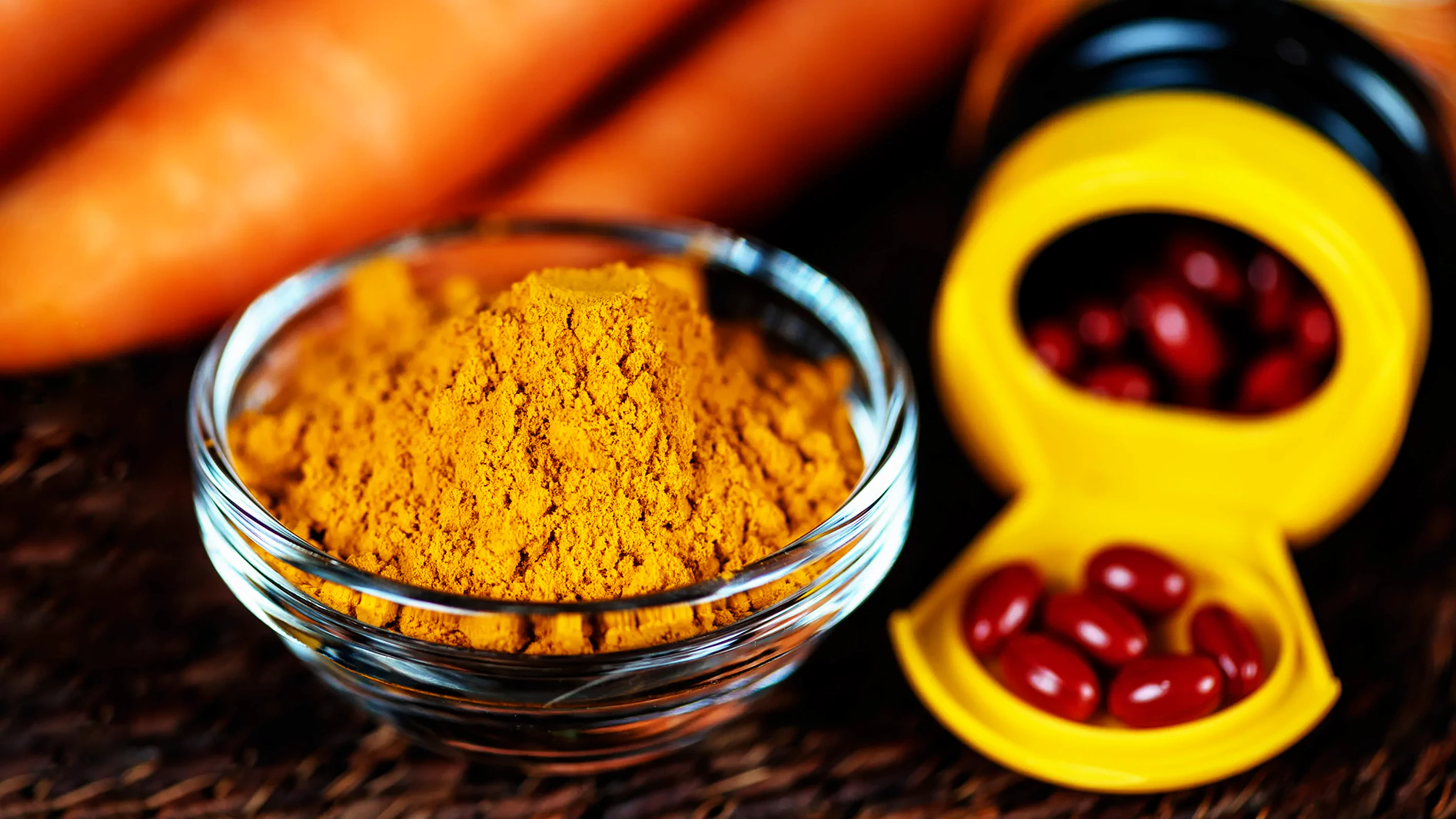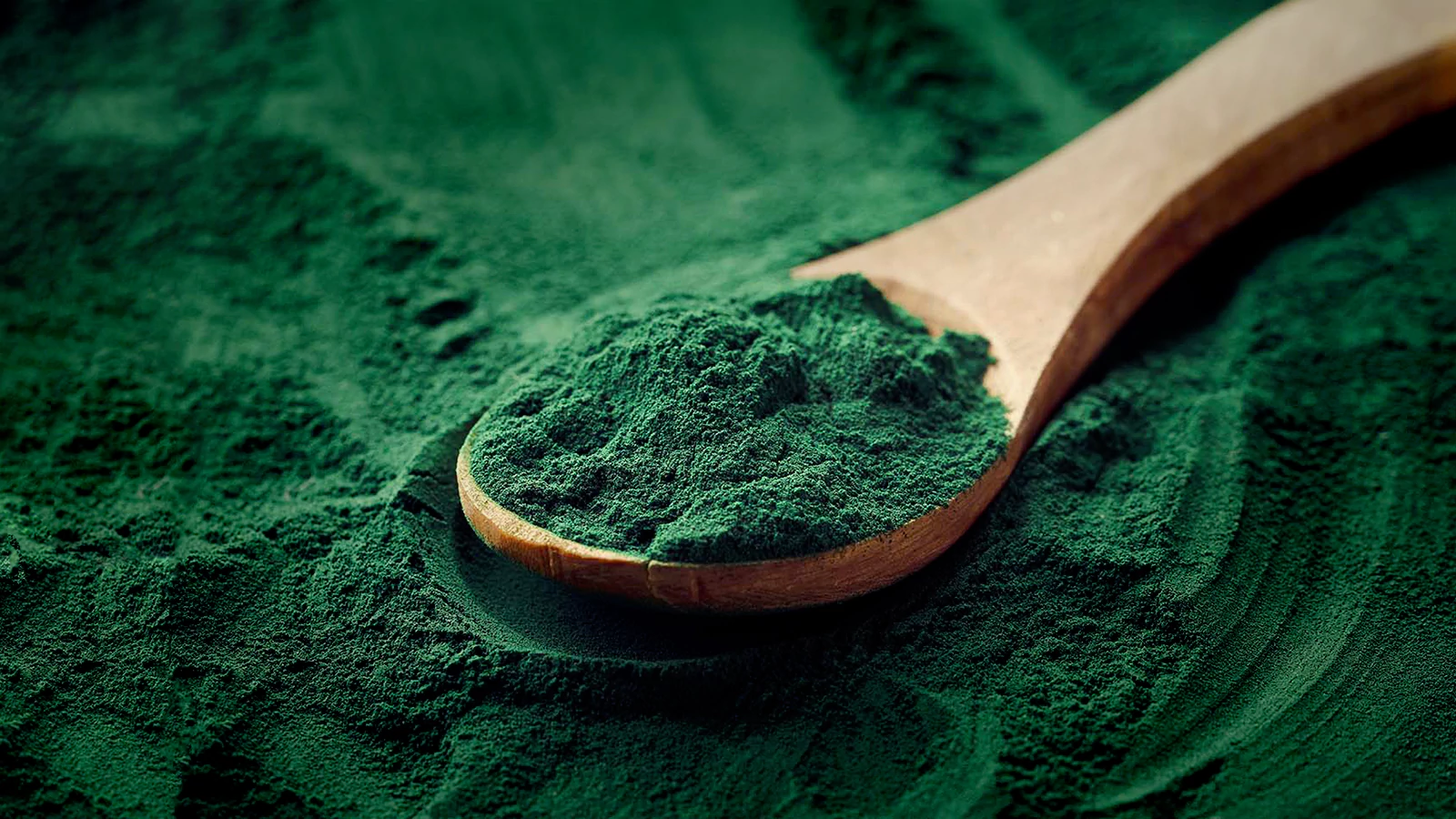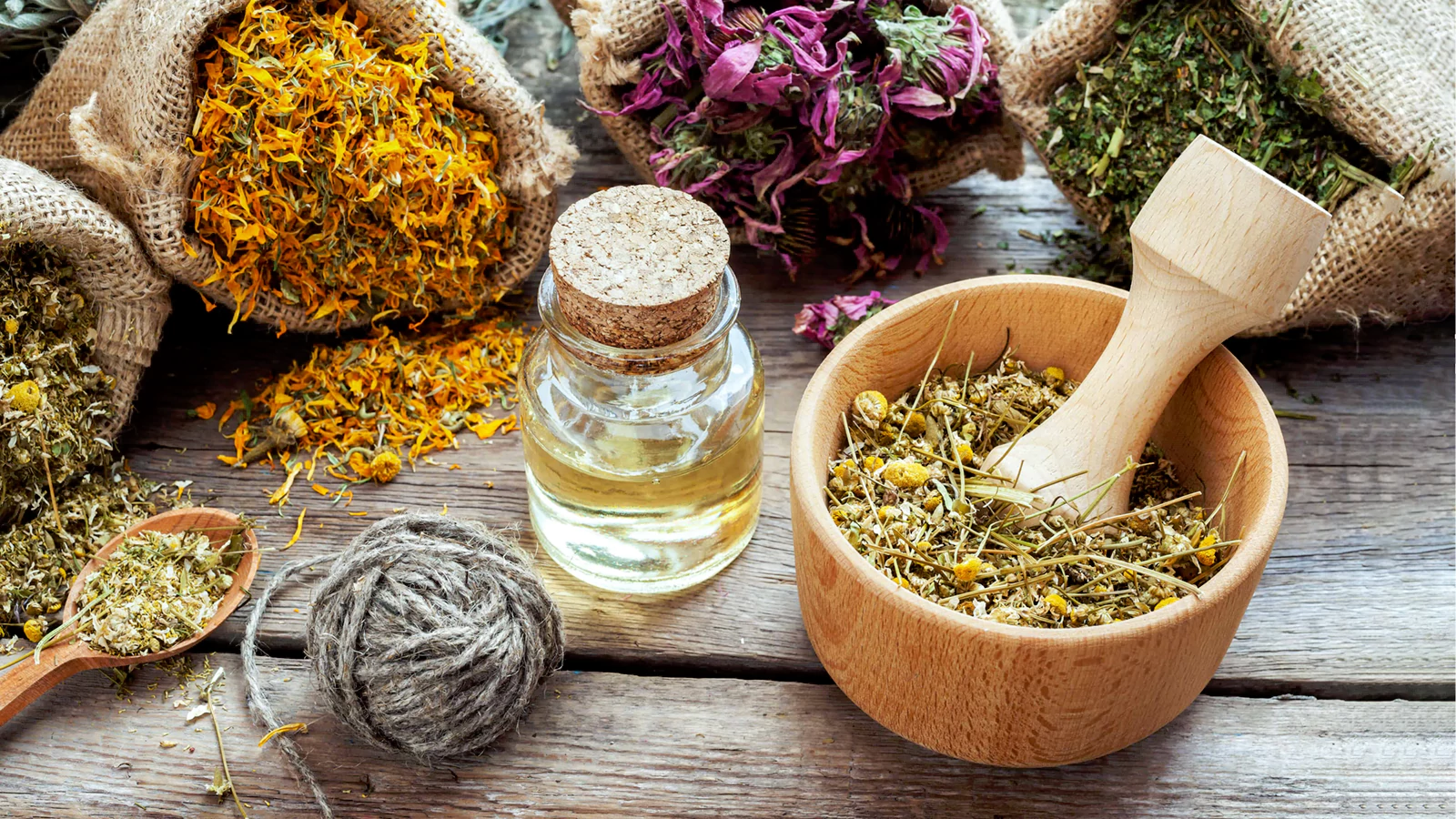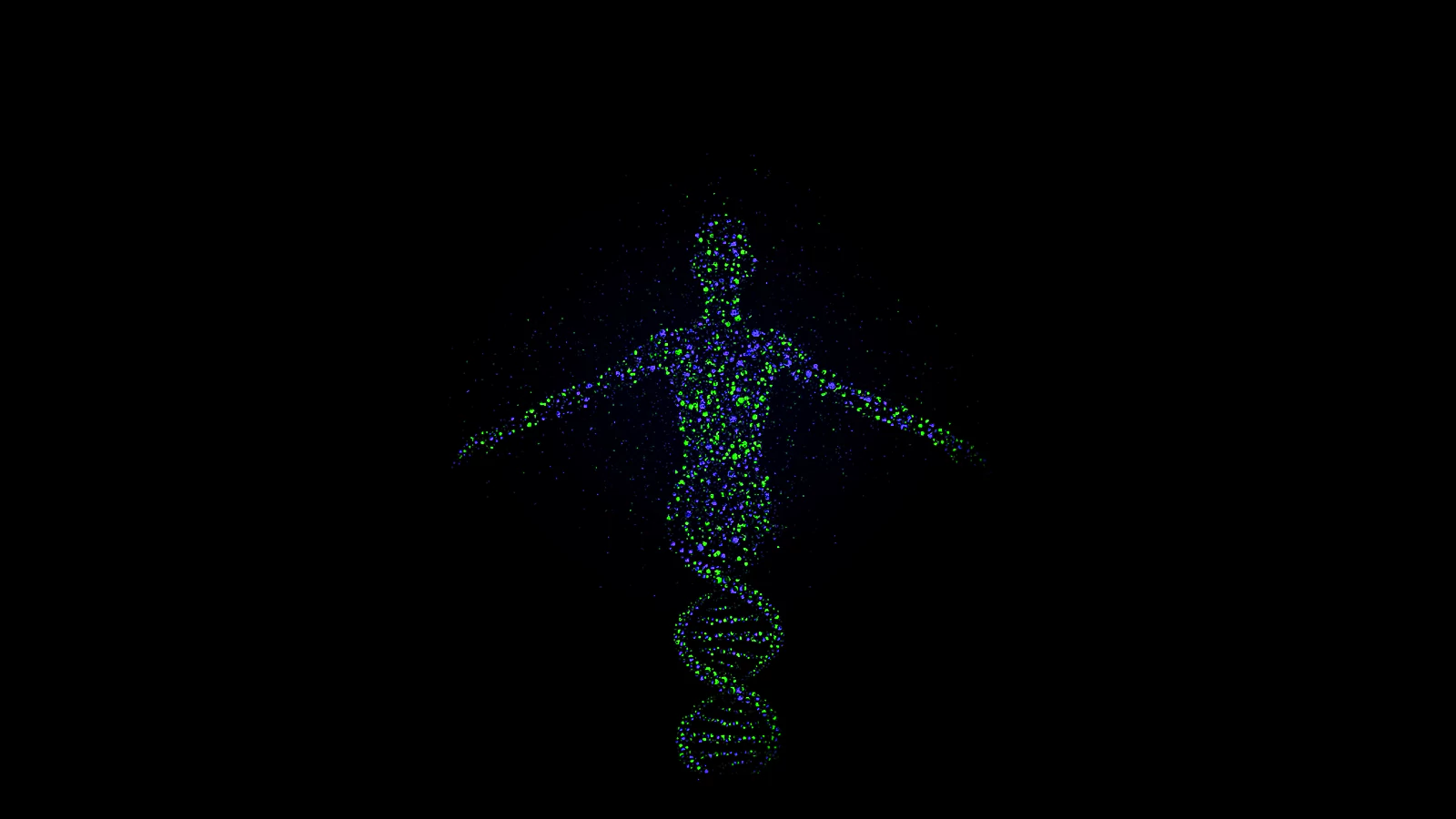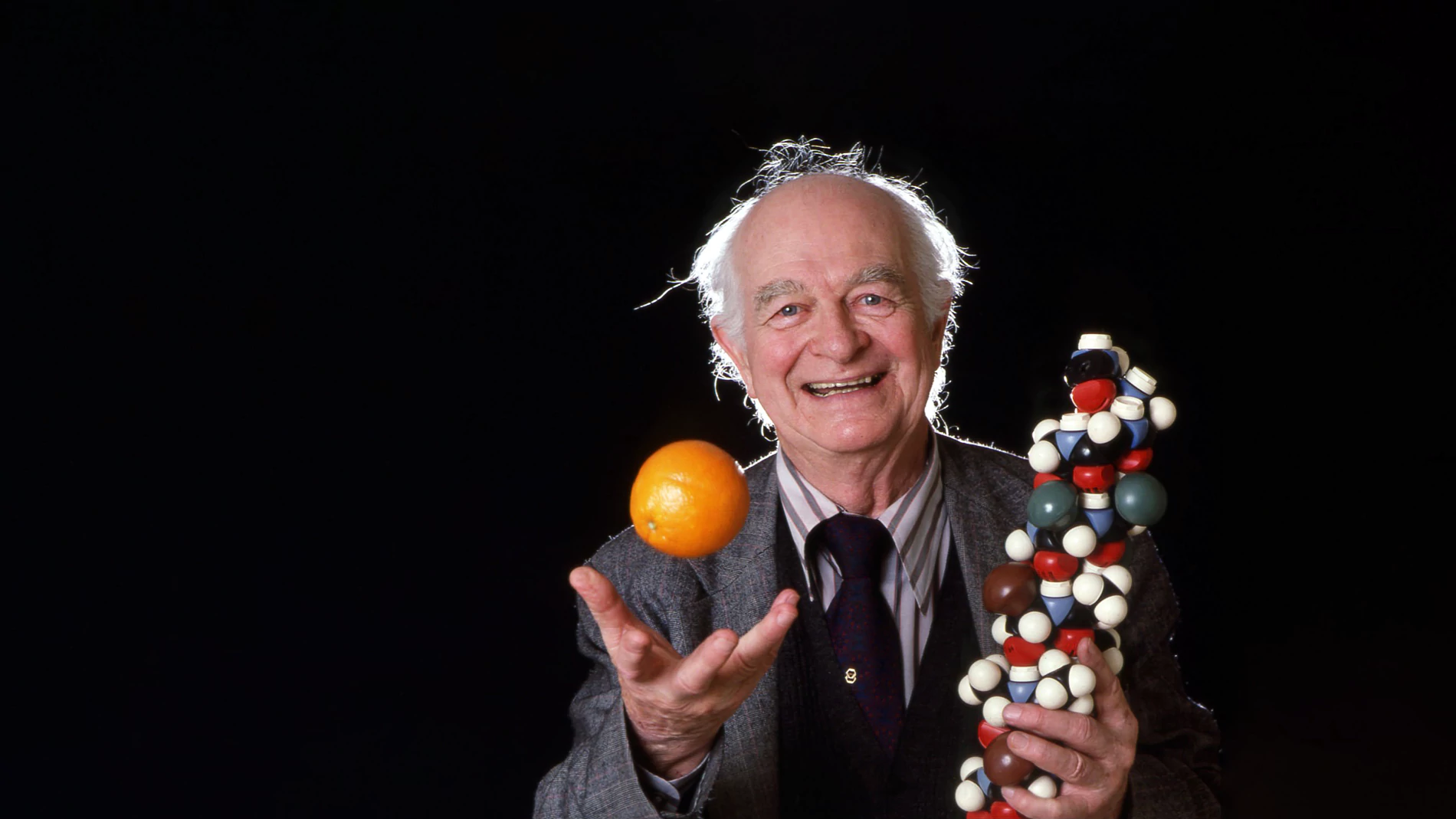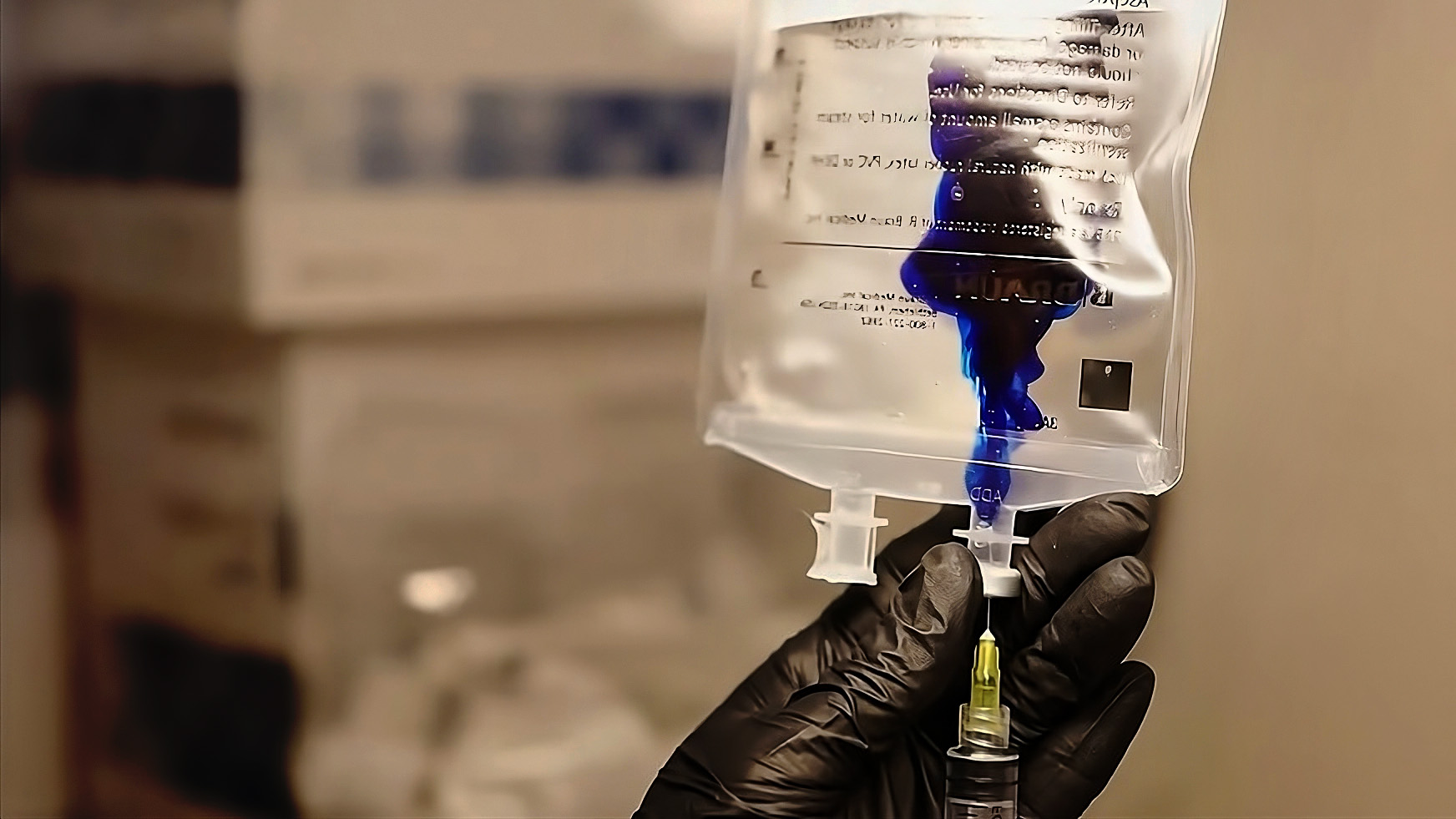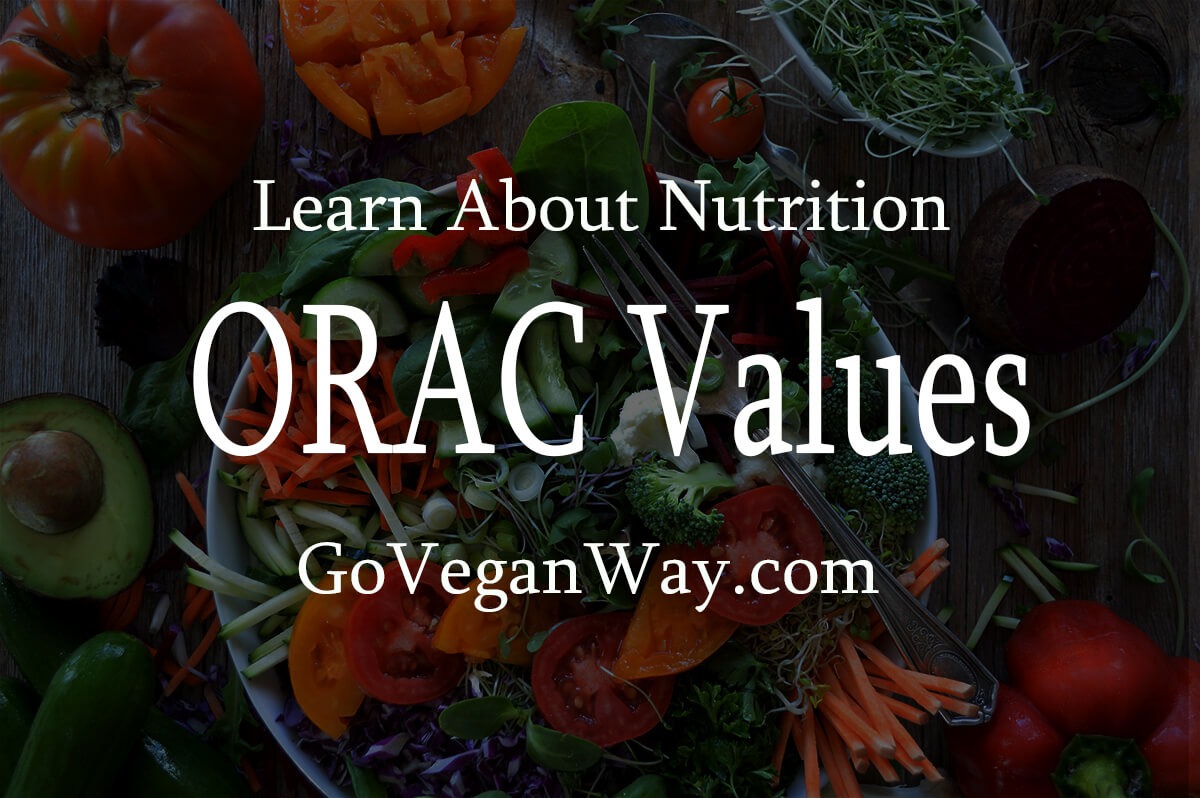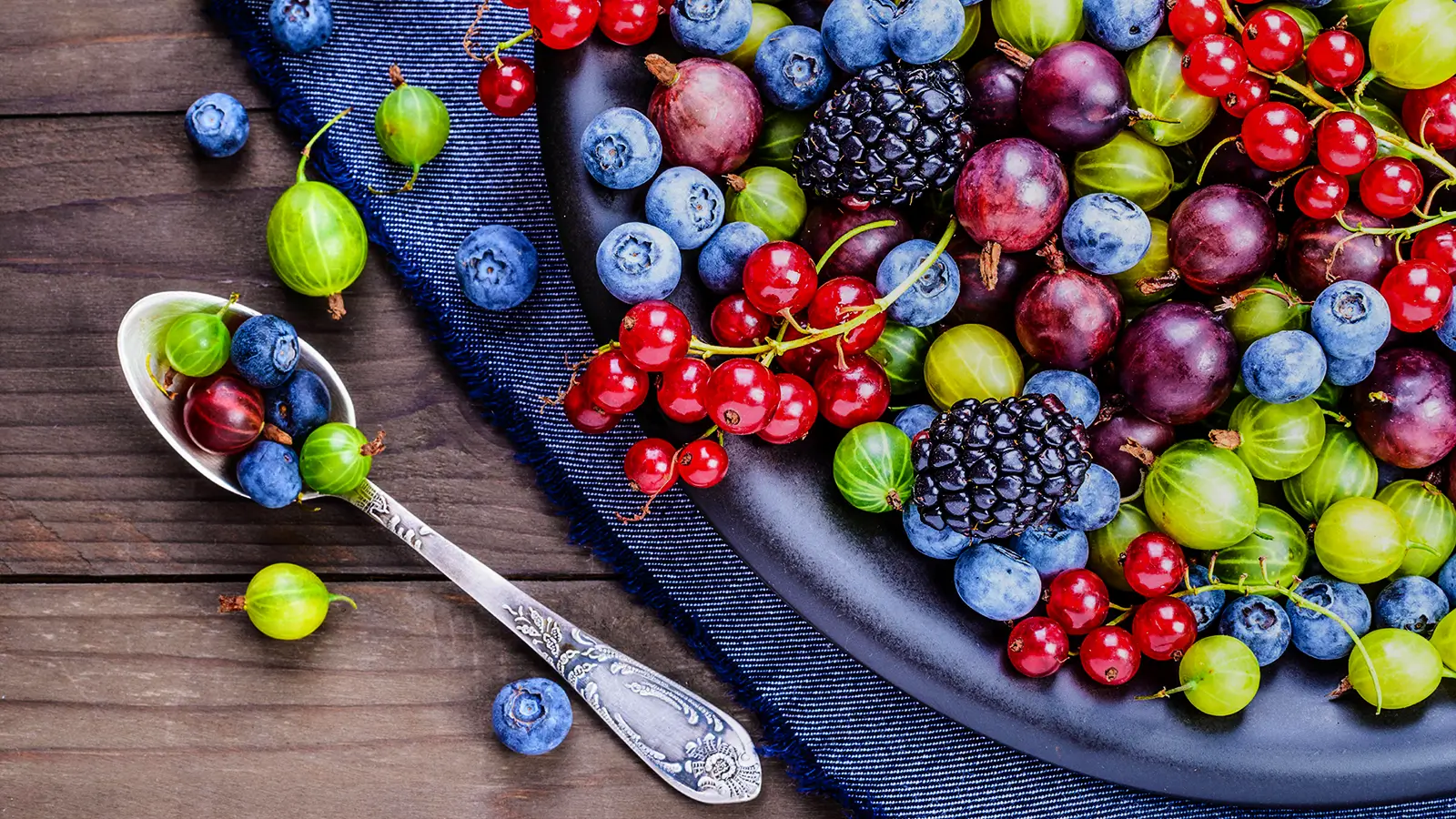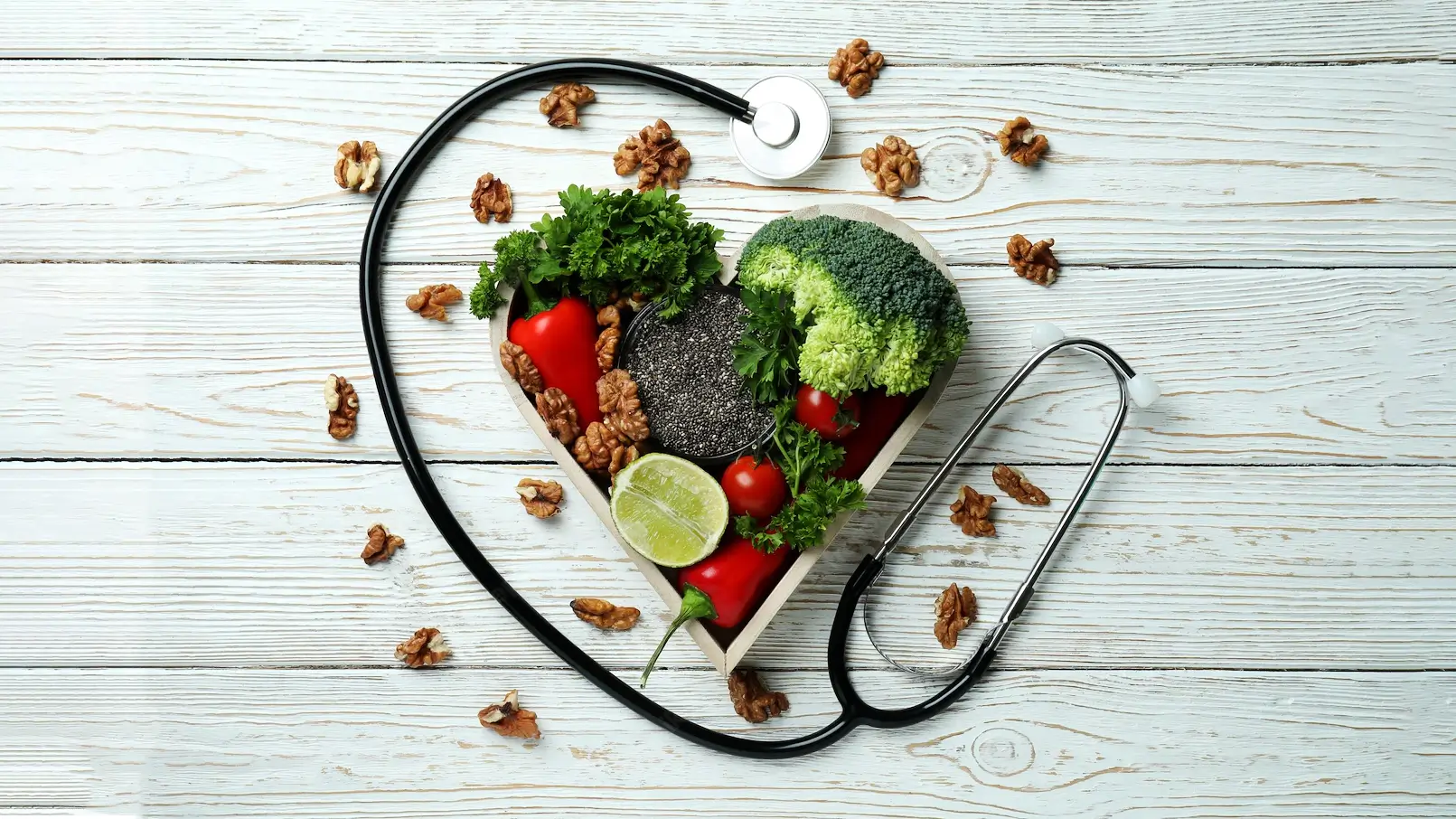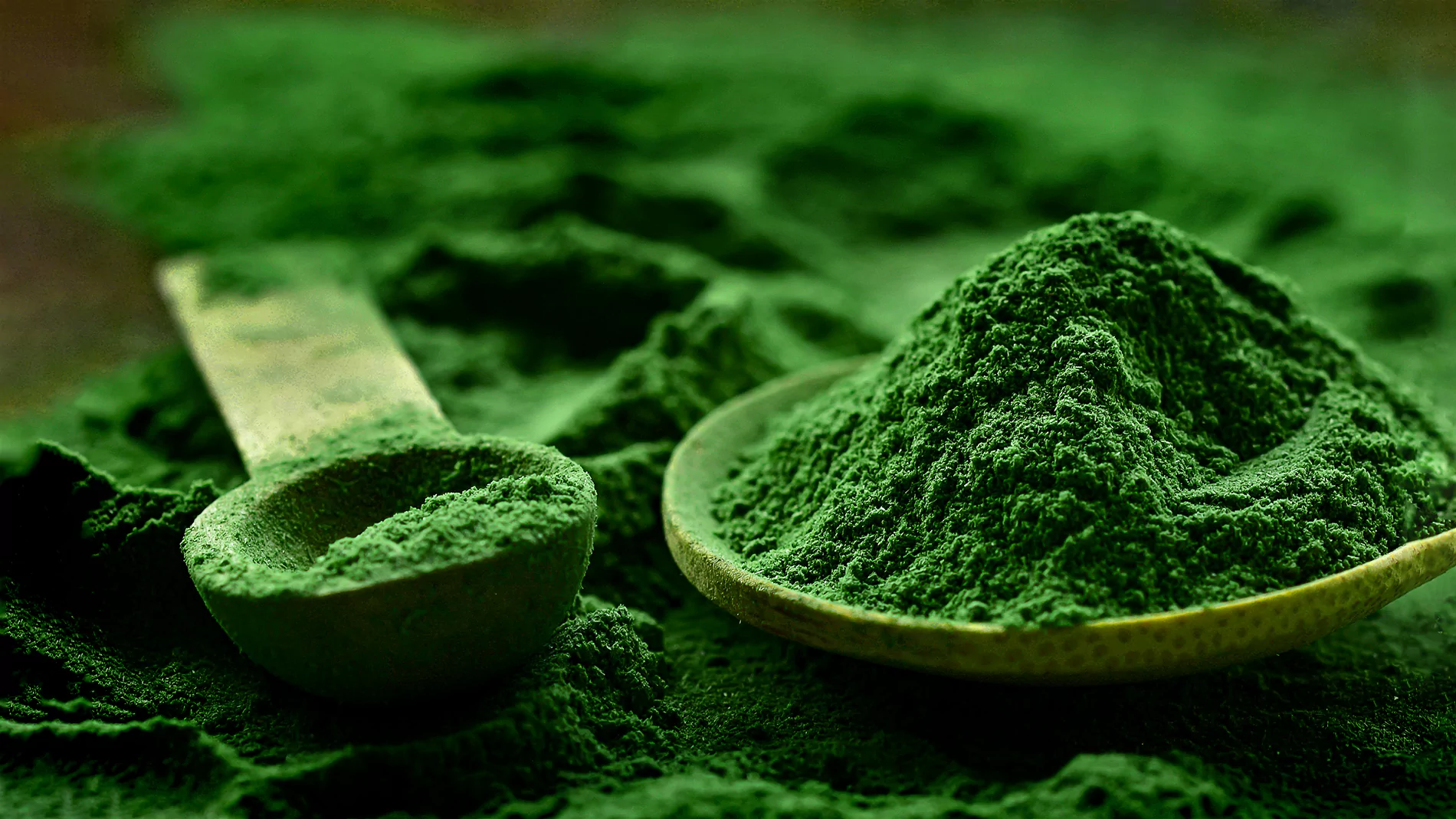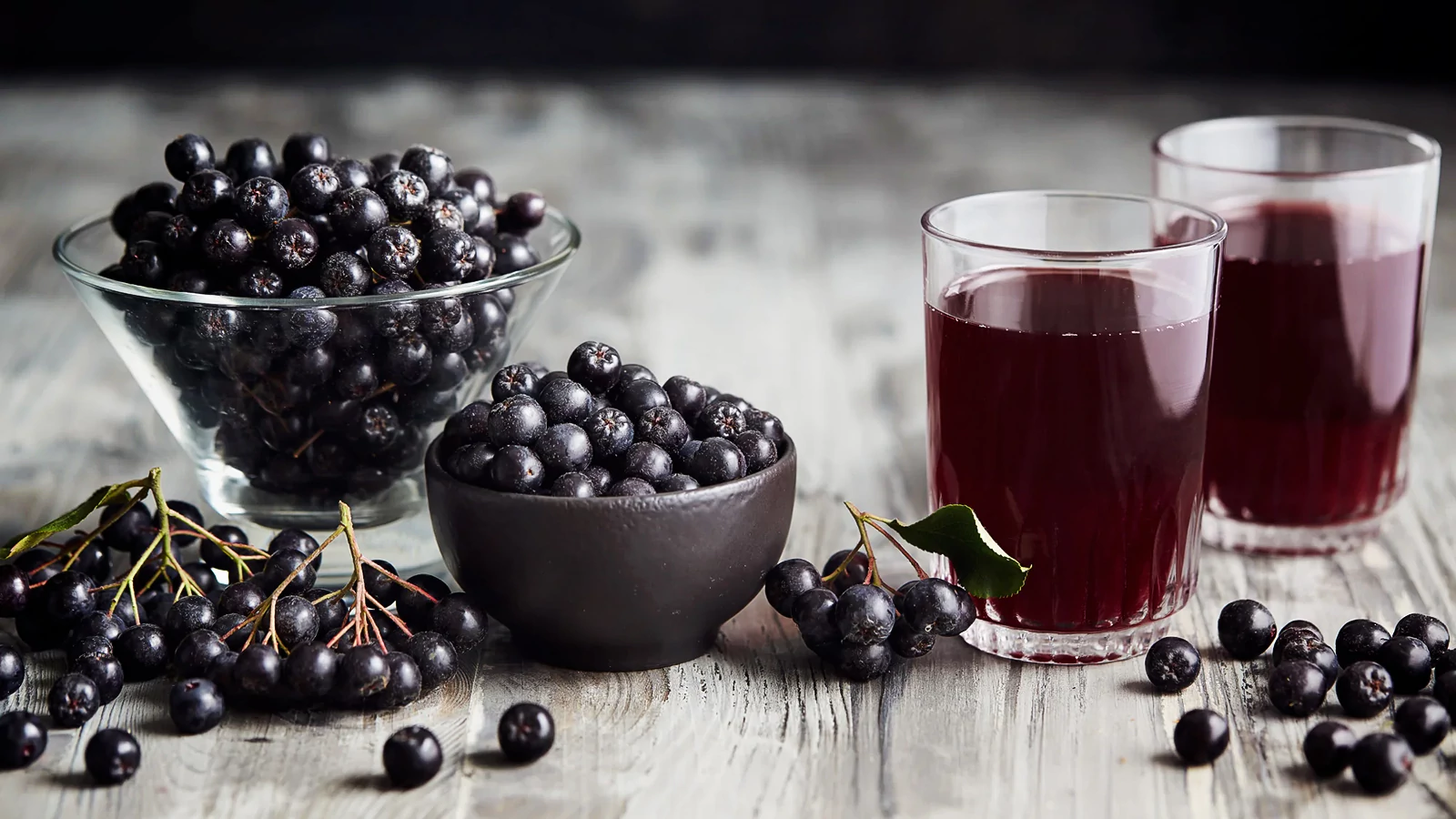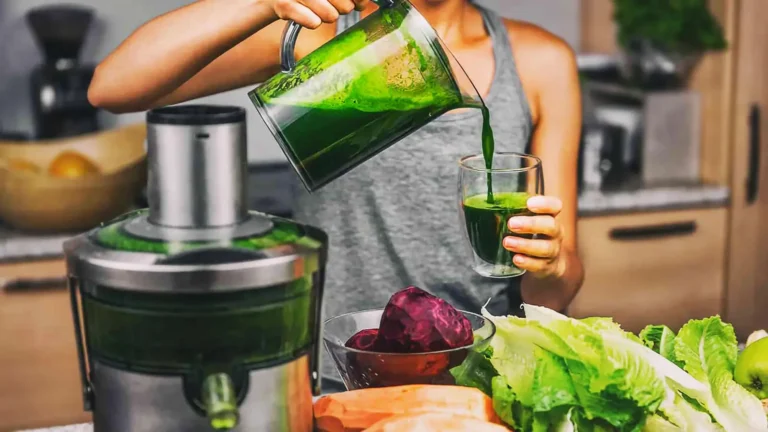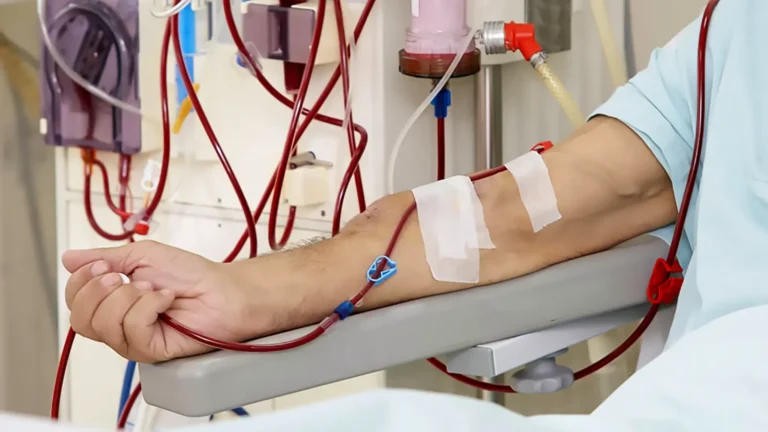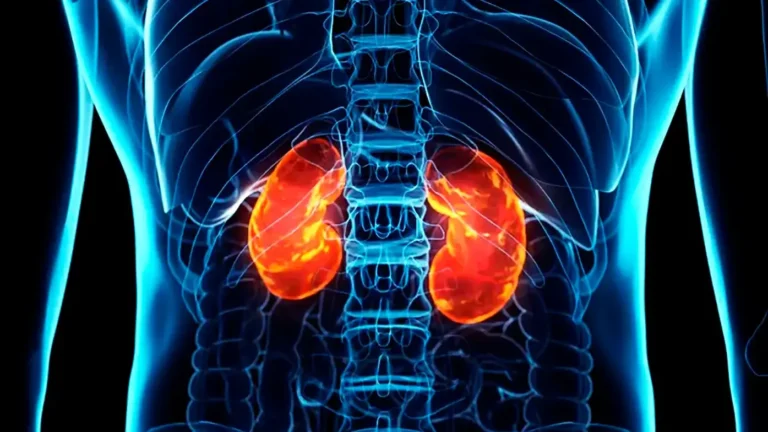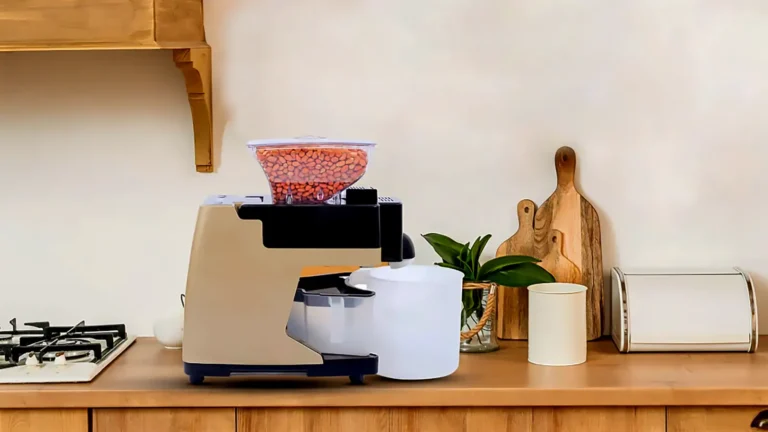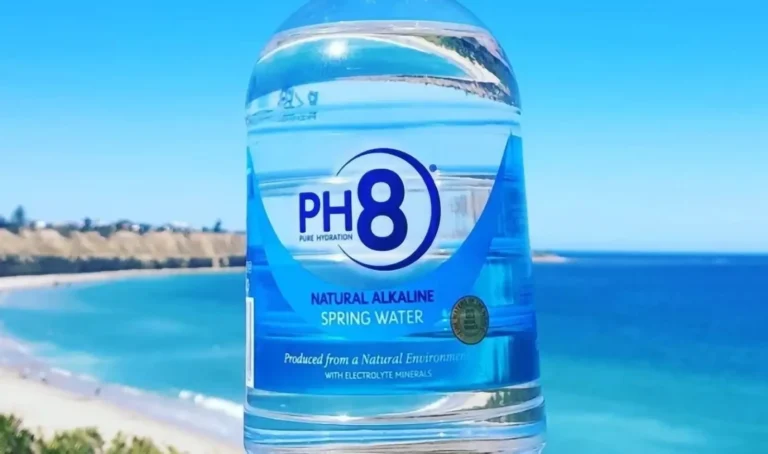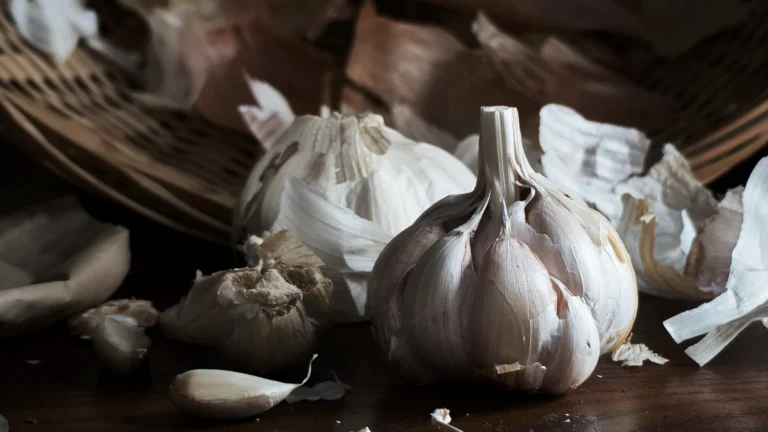Turmeric: Enhancing Health and Clinical Benefits
In turmeric, there are more than 300 active phytochemicals so far identified. It is so powerful that it can even alter our gene expression.
Milos Pokimica
Written By: Milos Pokimica
Medically Reviewed by: Dr. Xiùying Wáng, M.D.
Updated August 9, 2023Key Takeaways:
– Plant pigments, known as phytochemicals, are strong antioxidants that have health benefits and help prevent chronic diseases.
– Turmeric’s main pigment Curcumin is researched for its anti-inflammatory and anti-tumor properties.
– Consuming whole foods containing pigments is healthier than taking supplements.
– The bioavailability of turmeric curcumin is poor but can be boosted by consuming it with black pepper and fat. Adding oil to salads improves the absorption of oil-soluble pigments like beta-carotene or lycopene.
– Consuming high levels of turmeric can result in a high intake of bioavailable oxalates, which may cause kidney stones or trigger gallbladder pain.
– Turmeric has been proven to dramatically lower inflammation and helps in autoimmune inflammatory diseases like inflammatory bowel disease, osteoarthritis, rheumatoid arthritis, and ulcerative colitis.
– Curcumin directly kills different types of cancer cells from the colon, prostate, and breast to the pancreas. It also helps with diabetes type 2 and prediabetes and obesity and has strong neuroprotective properties.
– Curcumin modulates the activation of various transcription factors and regulates the expression of inflammatory enzymes, cytokines, adhesion molecules, and cell survival proteins while scavenging reactive oxidative species (ROS), reducing the inflammatory cancer microenvironment and promoting apoptosis (cell death), and inhibiting survival signals.
Plant pigments.
Most people are familiar with the antioxidant properties of vitamin C and its health benefits but if we compare vitamin C to other phytochemicals that have antioxidative properties we will see that vitamin C mg per mg, is a pretty weak antioxidant. Some of the plant pigments are very strong and have clinical and therapeutic properties in normal dosages without megadosing or IV infusions. These pigments’ sole purpose is to defend the plant from solar radiation and oxidation.
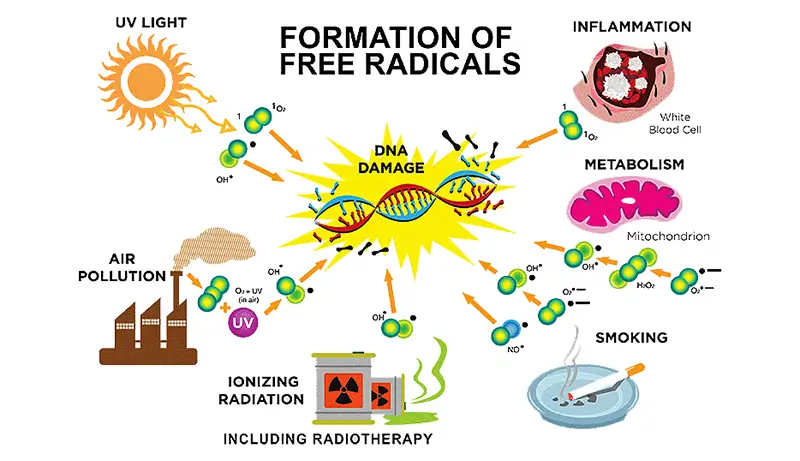
The reason why we have a much better color vision than carnivores is exactly because of this so that we can identify these plant pigments. We need to identify ripe fruits because of the energy stored in them in the form of fructose.
These plant pigments are essential to us as much as any other vitamin with only one difference.
We will not die from antioxidant deficiency directly. We will die indirectly from cancer or some other chronic disease and we will have an increase in cellular aging and inflammation and a shorter life. The stronger the pigment the stronger his power for neutralizing free radicals. Some of the plants that have strong pigments are the healthiest and have the most positive effects on our bodies. For example, berries are universally accepted as the healthiest fruit because of their strong antioxidative properties. Berries have very strong pigments. Acai berries are so strong that they are used for staining people’s digestive tract before imaging with X-rays. Some other plants have even stronger pigments than berries like turmeric. It will stain everything it touches. A small pinch of turmeric is enough to make your entire dish yellow. It is one of the strongest pigments out there. Curcumin is so health-promoting and so protective that it is researched as a chemotherapy drug besides a wide range of other implications. Elemene, for example, is a phytochemical derived from turmeric and is approved in China for the treatment of cancer. Curcumin is the main yellow pigment in turmeric that was found to have the most protective properties.
We have to keep in mind that curcumin is just one of the many phytochemicals in turmeric.
There is a whole list of other active ingredients in turmeric as a whole plant but the reductionist mentality of the medical industry believes that it is a much more effective and of course, much more lucrative practice if the active ingredient is extracted and then mega-dosed in a pill form.
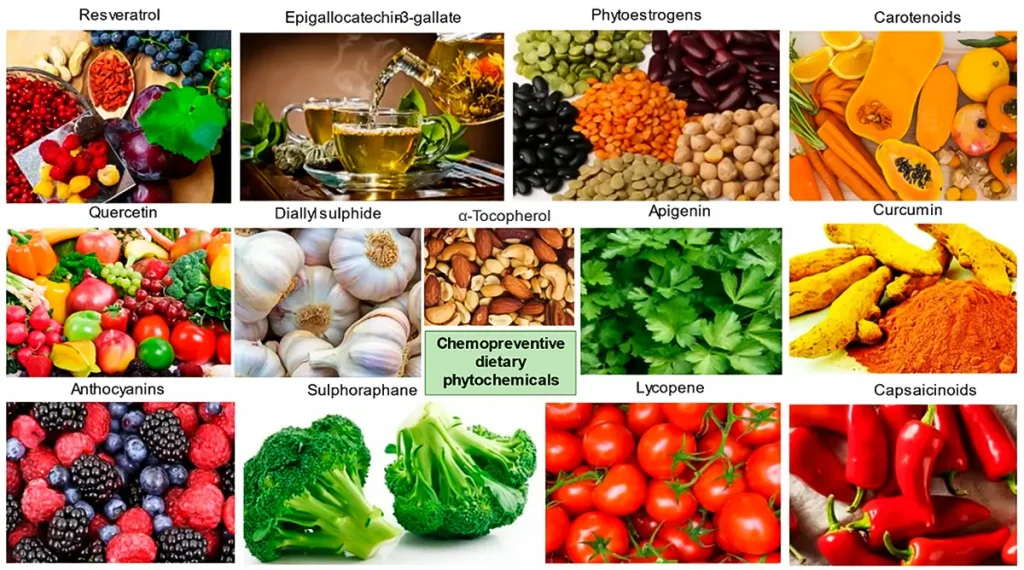
Plants contain numerous polyphenols, which have been shown to reduce inflammation and thereby will increase disease resistance.
Examples of such polyphenols are isothiocyanates in cabbage and broccoli, epigallocatechin in green tee, capsaicin in chili peppers, chalones, rutin and naringenin in apples, resveratrol in red wine and fresh peanuts.
But it is impossible to research them all. Only in turmeric, there are more than 300 active phytochemicals so far identified. For example, in this study (Aggarwal et al., 2013) they concluded that turmeric deprived of curcumin is more effective in fighting cancer and has more anti-inflammatory effects than curcumin by itself. The problem is that turmeric is just a spice and it is dirt cheap so no patents at the end of the research if not extracted to some pill form. The study concluded that turmeric represents a good source of new chemicals for the medical industry, not that people should eat the whole turmeric as a medicinal herb.
Bioavailability.
There is a problem with curcumin and that is its poor bioavailability. When consumed only tiny amounts will end up being utilized. Supplements use different methods to increase the bioavailability to up to 99 percent. They are more convenient to take but the whole food source is much healthier because of the wide range of different phytochemicals in it. Ideally, the solution would be to take the spice as a whole food product and increase its absorption. There is a way that we can do that. The solution is black pepper. There is a phytochemical in black pepper that boosts the bioavailability of curcumin if consumed together. Curcumin is approximately 5% of the weight of turmeric. Also, about 5% of black pepper by weight is comprised of a phytochemical called piperine. Piperine is what gives black pepper its aroma but it is also a strong inhibitor of liver metabolism. There are different pathways that the liver uses to detoxify chemicals and one of them is to make oil chemicals to be water-soluble so that they can be removed by the kidneys. Piperine molecule inhibits that process and doesn’t allow the liver to get rid of curcumin.
When we add just a pinch of black pepper to turmeric 1/20th of a teaspoon the bioavailability of curcumin shoots up 2000% (Shoba et al., 1998).
Also, the same way as with any other pigment like for example beta carotene or lycopene (red pigment) from tomatoes the bioavailability of these compounds is greatly increased by adding oil to the meal.
Fat can enhance the bioavailability of curcumin seven to eightfold.
When eaten with fat, curcumin can be directly absorbed into the bloodstream through the lymphatic system thereby in part bypassing the liver. Adding a small amount of fat to the salads was found to have the same effect as a wide range of different oil-soluble phytochemicals. All oil-soluble phytochemicals and including the pigments will have higher absorption with oil and higher bioavailability with black pepper.
Side effects.
The only real problem is the high levels of bioavailable oxalates in turmeric. Oxalates can bind to calcium to form an insoluble calcium oxalate, which is responsible for approximately 75% of all kidney stones. In people who have tendencies to form kidney stones, the consumption of oxalates should be less than 40 to 50 mg/day, which means no more than at most a teaspoon of turmeric.
Studies on humans did not show toxic effects, and curcumin was safe at the dose of 6 g/day orally for 4-7 weeks.
People with kidney stones or gout that want to use turmeric to lower inflammation might consider using curcumin supplements because reaching high levels of curcumin from turmeric would incur too much of an oxalate load.
One more thing that we have to take into account when dealing with turmeric is that it might trigger gallbladder pain in individuals with gallstones. It is a strong so-called cholecystokinetic agent, meaning that it facilitates the pumping action of the gallbladder to keep the bile from stagnating so if you have a stone in there the squeezing could cause pain.
Benefits.
So far in the last decade or so there was extensive research on turmeric and curcumin.
Turmeric has been proven to dramatically lower inflammation for example in smokers and also helps in autoimmune inflammatory diseases from inflammatory bowel disease to osteoarthritis and rheumatoid arthritis, and ulcerative colitis. It directly kills different types of cancer cells from the colon, prostate, and breast to the pancreas like any other chemotherapy drug. It is very potent and at the same time, it does not have any negative side effects. It helps with diabetes type 2 and prediabetes and obesity and has strong neuroprotective properties. It helps with Alzheimer’s disease, Parkinson’s disease, regular cognitive decline, and even depression. It is good for arterial function. It can help with heavy metal exposure and other toxins.
Everything ever tested gave a positive result and the truth is that there is nothing special about turmeric at all. It is just one more natural pigment or antioxidant like any other pigment. It is just stronger than some other pigments and that is it. But what is important to understand is that all pigments act similarly in plants and in the human body. All pigments have protective properties, not just curcumin. Keep in mind that studies on the biochemistry of one pigment would be similar to all pigments that exist. It is the same principle. Some pigments and antioxidants will be stronger, some weaker, but on the molecular level, they all act the same by giving off an extra electron.
Cancer prevention.
In cancer research in more scientific terms curcumin is known to modulate the activation of various transcription factors, it regulates the expression of inflammatory enzymes, cytokines, adhesion molecules, and cell survival proteins.
In studies, it has proven to be an antiproliferative, anti-invasive, and antiangiogenic, as a mediator of chemoresistance, chemopreventive, and therapeutic agent (Ara et al., 2016).
It modulates multiple molecular pathways involved in the carcinogenesis process: scavenging reactive oxidative species (ROS), reducing the inflammatory cancer microenvironment, promoting apoptosis (cell death), and inhibiting survival signals (Park et al., 2013).
There are hundreds of different genes that need to be mutated to create a cancer cell. Some estimates are between 300 and 500. Usually, most types of cancer start to develop in the teenage years and even before that but it takes decades until they are fully diagnosed and visible. That is because there are multiple different pathways that create different mutations that in the end will result in the formation of a malignant cancer cell. The problem is that when the medical industry deals with cancer and creates different chemotherapy drugs that target only one pathway and are extremely specific in what they do. There is no holistic approach to the treatment of cancer and as a result, there is no drug regimen that will target all of those different pathways of cancer promotion.
Plants’ phytochemicals and in this case curcumin do exactly that. That is the reason why in the last decade and especially since 2004 there is an explosion in turmeric research. Drug companies want to extract some of the phytochemicals from different plants that are known to have anti-cancer properties to use them in addition to already existing and narrow targeted chemotherapy drug regimens to have more multitargeted therapies, especially because the current practice has become unsustainable. People are educating themselves and starting to ask questions and starting to use the internet for their own research.
Almost 50 years after President Richard Nixon signed the bill pushed by Big Pharma that would be called War on Cancer, cancer is still right behind heart disease as the leading cause of death in the United States. The numbers that they don’t want you to know are something like this.
When we look at real data on survival that all of the radiation and chemotherapy brings to someone’s life it is about 2.1 percent in the US (Morgan et al., 2004). I want to repeat this again. It is at 2.1 percent.
Basically, all of that suffering is for nothing. Five years after the chemo the number of people that will still be alive compared to ones that did not receive any treatment is 2.1 percent. Actually, the real number is around 1 percent for most common cancers like colon, lung, breast, and prostate is zero. The average goes up one percent because there are some cancers like testicular or Hodgins that have a survival rate much higher, about 88 percent but for more than 95% of different cancer types, it is basically zero. I wrote more about the Big Pharma medical business in the second part of the book series. This is not by accident or because the science is not adequate and cannot do anything about cancer. Around 95% of all cancers are caused by a bad diet and environmental toxicity plus all of the bad habits that increase our toxic overload like smoking and around 1 to 2 percent are caused by bad genes (Anand et al., 2008). This is not a big secret except “they“ just don’t want to tell patients all of this. Cancer is a 95 percent preventable disease, the same way as cardiovascular disease or all of the other diseases of affluence that I already wrote about in the first book of the series.
Today big companies have started to invest in research into these phytochemicals more than they are been willing in the past with the desire to patent some of the phytochemicals as an end result and rise the survival rate a little bit. But who can stop us from just eating them in a whole-food manner? If we look at the statistics, we will see that population data shows that in India for example where turmeric is consumed in a significant amount there is a big gap in cancer rates than in Western countries. In the U.S. the skin cancer rate with all of the sunscreen promotion from dermatologists is 14 times more prominent than in India. That is 1400 percent more. Prostate cancer is 23 times more prominent, colorectal cancer is 11 times more, endometrial cancer is 9 times, breast cancer is 5 times more, lung cancer is 17 times more, and so on (Bengmark et al., 2009). This is not just because of the turmeric but because of the fact that more than 40 percent of India’s population is vegetarian and that people that do eat meat also eat much less of it on a daily bases than in the USA. On top of this, they consume much more vegetables and especially fruit and on top of this, they consume turmeric and other spices.
The cancer rate difference in some types of cancers is even more prominent than the ones that are found in the China Study, but the conclusion is the same. How much a high consumption rate of turmeric plays a role is an object of investigation, and you can read more on the topic if you want in this review (Hutchins-Wolfbrandt et al., 2011).
Currently, there is a lot of research done and turmeric is tested for a wide variety of cancers if not for all of them for both prevention and as a chemotherapy drug. Prevention is the keyword here. Phytochemicals do not have any negative side effects and do a lot of other beneficial things for other diseases and longevity and can be taken for extended periods of time or for our entire life and are cheap. Chemotherapy not so much and this is a crucial difference.
It was known back in the 80s after some in vitro studies that curcumin blocks all three stages of cancer development cancer transformation, proliferation, and invasion. It even blocks mutagens to enter the cells in the first place so it has strong antitoxic and antimutagenic action (Ravindran et al., 2009). It also upregulates a lot of different pathways for apoptosis (self-induced cell death) in cancer cells but leaves normal cells alone with a mechanism not so fully understood (Ravindran et al., 2009). It will activate the cell self-destruction gene in cancer cells by a wide range of different pathways. Cancer cells normally have this mechanism turned off completely and actually never die. In scientific terms:
“Curcumin modulates growth of tumor cells through regulation of multiple cell signaling pathways including cell proliferation pathway (cyclin D1, c-myc), cell survival pathway (Bcl-2, Bcl-xL, cFLIP, XIAP, c-IAP1), caspase activation pathway (caspase-8, 3, 9), tumor suppressor pathway (p53, p21) death receptor pathway (DR4, DR5), mitochondrial pathways, and protein kinase pathway (JNK, Akt, and AMPK).“
(Ravindran et al., 2009)
This is all nice on paper but what is the real practical efficiency of curcumin in human testing? How strong is it? It depends on the type of cancer and the research that is still going on. But in some cases, it is even stronger than leading chemotherapy drugs. For example, when it was tested for pancreatic cancer which is one of the worst types with a survival rate of zero it managed to kill some of the cancer cells in around 10 percent of subjects, and in one subject cancer regressed 73 percent. The problem with any drug that is designed to kill cancer cells is that there are different mutations in them so if only 1 percent of cancer cells survive and are resilient that 1 percent will then continue to multiply and in time it will grow and be the same size as before. That is why prevention is the key.
If you already have cancer it is highly unlikely that curcumin will save your life.
The only hope is that the cancer is localized and that it can be surgically removed. Once it has spread throughout the body survival rate is minimal. The good thing about curcumin is that it does not have any negative side effects and that no matter how bad your diet is, it can still help. In one study (Polasa et al., 1992) they measured how much mutagens are in the urine of the smokers by dripping it into bacteria culture and then measuring the damage to DNA.
Adding turmeric in doses of just 1.5 g/day for 30 days lowered the urinary mutagens by more than 50 percent. The conclusion was:
“These results indicate that dietary turmeric is an effective anti-mutagen and it may be useful in chemoprevention.“
(Polasa et al., 1992)
In my opinion, this phytochemical is well researched and turmeric should be added as a supplemental antioxidant for the duration of a whole life.
Inflammatory and autoimmune diseases.
Besides cancer prevention one of the strongest effects of turmeric is lowering overall inflammation in the body. This can slow down the oxidation and DNA damage giving us longevity but can also help with inflammatory and autoimmune diseases.
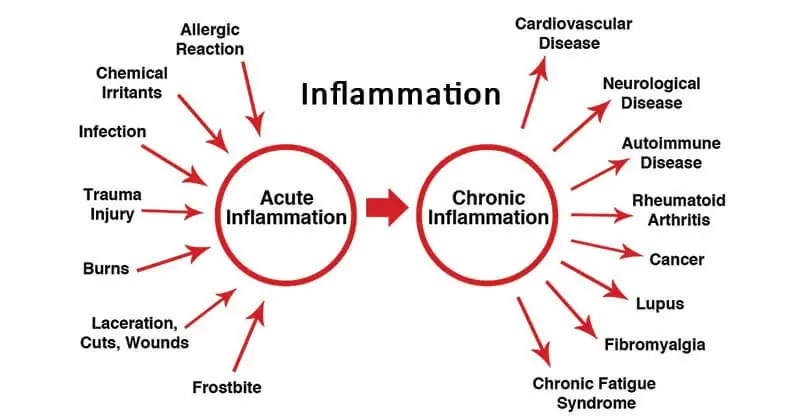
The problem with autoimmune diseases is that there is no cure when the immune system malfunctions and starts to attack our own cells. The only treatment is to take immune suppressive medication that has severe side effects ranging from leukemia and cancer to infertility. Turmeric and other antioxidants can help without any side effects. Lupus is one of the autoimmune diseases that attack the nucleus of the cell itself so it can attack any organ and is very hard to treat. People with a disease like lupus have their life turned into a nightmare.
In this study (Khajehdehi et al., 2012) they gave turmeric to subjects with refractory (untreatable) lupus. After treatment, all subjects except one man, almost 99 percent of them got better and got better significantly. Side effects free.
It is highly unlikely that turmeric will be prescribed as a treatment by your doctor if you have lupus but you can take it yourself and if it helps you can lower your medication. If you don’t have lupus take it as well as an antioxidant-rich medical herb. When dealing with other harsh inflammatory diseases like for example inflamed bowel disease (Crohn’s disease) first study ever done was done in 2005 by individual doctors themselves that decided to go against the medical industry and do study themselves with no financial backup.
It took almost 50 years after the first discovery that curcumin had anti-inflammatory properties for some rogue doctors in New York to do a study (Holt et al., 2005).
Four out of five subjects treated improved. Ulcerative Colitis is actually not that uncommon. Many people have inflamed intestines from milder forms to severe forms. Treatment is ineffective and has harsh side effects that can cause inflammation through the body like inflamed liver, kidneys, and pancreas plus pain, fever, vomiting, and in 30 percent of cases full-blown infertility. After the completion of that study, other studies were done.
Next year in Japan there was a full double-blind, placebo-controlled, large-scale study (Hanai et al., 2006).
They used only 2 grams of curcumin per day and actually admitted that the dose is inadequate. Nevertheless, the result was a 5% relapse rate in the curcumin group compared to a 20% relapse rate in the control group.
People that have Crohn’s disease have autoimmune flare-ups or relapses but besides that, the overall state of the curcumin group was much better both subjectively and objectively with the endoscopic examination. The difference was so extreme that researchers could not believe the results. They theorized that it might just be that for example people selected randomly were in better condition and healthier just by some fluke coincidence. So, they decided to prolong the study for six more months but they gave everyone a placebo. They wanted to see would those people that were getting curcumin start to relapse once again after they have been taken off of it. That was exactly what happened and remember this was only 2 grams a day. Curcumin is a powerful substance.
It is so powerful that it can even alter our gene expression. We are born with a fixed genetic structure but our genes constantly mutate and evolution goes forward. What genes would be activated depends on their expression which is dependent on environmental (external) factors.
The summary of this review (Shishodia, 2013) says it all:
“The preventive and therapeutic properties of curcumin are associated with its antioxidant, anti-inflammatory, and anticancer properties. Extensive research over several decades has attempted to identify the molecular mechanisms of curcumin action. Curcumin modulates numerous molecular targets by altering their gene expression, signaling pathways, or through direct interaction. Curcumin regulates the expression of inflammatory cytokines (e.g., TNF, IL-1), growth factors (e.g., VEGF, EGF, FGF), growth factor receptors (e.g., EGFR, HER-2, AR), enzymes (e.g., COX-2, LOX, MMP9, MAPK, mTOR, Akt), adhesion molecules (e.g., ELAM-1, ICAM-1, VCAM-1), apoptosis related proteins (e.g., Bcl-2, caspases, DR, Fas), and cell cycle proteins (e.g., cyclin D1). Curcumin modulates the activity of several transcription factors (e.g., NF-κB, AP-1, STAT) and their signaling pathways. Based on its ability to affect multiple targets, curcumin has the potential for the prevention and treatment of various diseases including cancers, arthritis, allergies, atherosclerosis, aging, neurodegenerative disease, hepatic disorders, obesity, diabetes, psoriasis, and autoimmune diseases.“
(Shishodia, 2013)
They have described aging in the review as a disease as well. I found that to be interesting, and yes strong antioxidants have the potential to protect DNA from damage and in a sense prolong life. You won’t be able to understand any of this scientific terminology but that is not important. What is important is to understand the extent of the potency of certain medicinal plants and their phytochemicals. People tend to think that only synthetic molecules that come from some laboratories have any medical potential and the truth is completely opposite. The real potential is in phytochemicals that have been evolving for hundreds of millions of years on this planet and synthetic molecules are just weak substances that have been created so that big chemical companies can make a lot of money on their patents. And even most of the drugs today are actually just extracted phytochemicals in the first place.
I will use a quote from a review that was done back in 2013, and this is from clinical trials on humans (Gupta et al., 2013). They concluded:
“Some promising effects have been observed in patients with various pro-inflammatory diseases including cancer, cardiovascular disease, arthritis, uveitis, ulcerative proctitis, Crohn’s disease, ulcerative colitis, irritable bowel disease, tropical pancreatitis, peptic ulcer, gastric ulcer, idiopathic orbital inflammatory pseudotumor, oral lichen planus, gastric inflammation, vitiligo, psoriasis, acute coronary syndrome, atherosclerosis, diabetes, diabetic nephropathy, diabetic microangiopathy, lupus nephritis, renal conditions, acquired immunodeficiency syndrome, β-thalassemia, biliary dyskinesia, Dejerine-Sottas disease, cholecystitis, and chronic bacterial prostatitis. Curcumin has also shown protection against hepatic conditions, chronic arsenic exposure, and alcohol intoxication. Dose-escalating studies have indicated the safety of curcumin at doses as high as 12 g/day over 3 months. Curcumin’s pleiotropic activities emanate from its ability to modulate numerous signaling molecules such as pro-inflammatory cytokines, apoptotic proteins, NF-κB, cyclooxygenase-2, 5-LOX, STAT3, C-reactive protein, prostaglandin E(2), prostate-specific antigen, adhesion molecules, phosphorylase kinase, transforming growth factor-β, triglyceride, ET-1, creatinine, HO-1, AST, and ALT in human participants.“
(Gupta et al., 2013)
On the other hand eating animal products have the complete opposite action. Meat is not just a neutral product that is rich in iron and protein. It is a food item that is loaded with dead meat bacteria endotoxins and mutagens, especially when cooked, and has other toxins and heavy metals from the environment and cholesterol and saturated fat it stimulates cancer-promoting IGF-1 and is pro-inflammatory just by itself even if we disregard the fact that it does not have any of the antioxidant properties in a first place.
If you are young and completely healthy and if you have the healthiest diet that you possibly can you still should add curcumin and some other medicinal plants and supplements that have been shown to have health-promoting abilities. If not for anything else then just as a means of prolonging your life expectancy and protecting yourself from diseases in the long run.
Turmeric also has strong neuroprotective properties that will help with neurological disorders and diseases but also with normal cognitive decline that goes with aging. It will help with prediabetes and obesity. It will help with artery function. In many inflammatory diseases, it works better than leading drugs with no side effects.
For example, 500 mg of curcumin works significantly better for rheumatoid arthritis than diclofenac (Chandran et al., 2012). Keep in mind that diclofenac is a very strong nonsteroidal anti-inflammatory drug that is also used for migraine attacks or kidney stones and other painful conditions and would also dramatically increase (around 40 percent) your risk of fatal heart attack or stroke if you take it for long periods of time. Sometimes it is even combined with opioids like codeine for pain management. Codeine itself is a phytochemical found in poppy seeds. Poppy contains many alkaloids, the most important phytochemicals are morphine, noscapine, and codeine.
Turmeric is even good as a prebiotic. It has a positive effect on the microbiota colony in our intestines.
Turmeric vs curcumin.
One more thing I want to mention is that in almost all cases, complete food is a better choice than extracted single phytochemical because of the phenomenon known as food synergy. Synergy means that we have two compounds that will work together much better than individual compounds combined. Two plus two equals five if you like that analogy. This is also the reason why many of the pigments like beta carotene and lycopene in the extracted form are useless.
Carrots lower the risk of cancer but beta-carotene in a pill increases the risk. Tomatoes lower the risk of prostate cancer dramatically but lycopene increases the risk.
This is very important because some supplements are more than just a waste of money and can do us harm. People might get the idea that if they don’t eat enough vegetables they can get antioxidants from a pill after a nice meal of barbequed bacon. And this is not the case in all situations. There are some that can be taken as a supplement but not all of them. Curcumin from turmeric is excellent even as a supplement but for example, but beta-carotene and lycopene are not. If they are not packed as a whole food with thousands of other phytochemicals that work synergistically to neutralize some of the other bad effects, some of these extracted phytochemicals can do us a lot of damage. That is a reason why we always need to choose healthy food in a whole food package instead of pills until there is extensive research done on specific phytochemicals in real clinical double-blind studies. Curcumin is well studied now and so is lycopene and so are many other phytochemicals and today we have a basic scientific knowledge of many of them.
Turmeric Benefits:
- Proven to dramatically lower inflammation and as an extension helps with all diseases that come with chronic inflammation.
- Pain-reducing especially in cases of chronic inflammation like Arthritis, Lupus…
- Cancer treatment and prevention through regulation of multiple cell signaling pathways.
- Autoimmune diseases– It has strong immunomodulating properties by regulating inflammatory cytokines and signaling pathways in immune cells (Bright, 2007).
- Strong neuroprotective properties -Alzheimer’s disease, Parkinson’s disease, regular cognitive decline…
- Strong antitoxic and antimutagenic action by blocking mutagens from entering the cells.
- Strong antitoxic and heavy metal chelating agent -Electron donor that never turns into pro radical.
- May help manage diabetes– In one study it activated the enzyme AMPK more than 400 times more than metformin (the most prescribed diabetes and longevity drug on the planet, I take metformin myself as a regimen).
- Protects from the damage of diabetic nephropathy.
- May help with obesity– By suppressing obesity inflammatory processes and their adverse health effects.
- Improves serum lipid levels– In one study its potency was comparable to atorvastatin (Usharani et al., 2008).
- Enhances Muscle Recovery.
- Effective in treating multiple skin conditions- You have to consume it, it helps with psoriasis, pruritus, oral lichen planus, facial redness, as well as types of skin cancers (Mata et al., 2021).
- Reduction in depression and anxiety symptoms– Impacts neurotransmitter function through the brain-derived neurotrophic factor, in one study it was as effective as the drug fluoxetine (Sanmukhani et al., 2014).
- Prevent blood clot formation- Strong antiplatelet and anticoagulant properties, you might want to lower the aspirin or other blood thinners if you take them, consult your physician (Keihanian et al., 2018).
- Alters gene expression and slows down the rate of DNA damage.
- Good as a prebiotic- It has a positive effect on the microbiota colony in our intestines.
- Dirt cheap, readily available whole food spice.
Conclusion:
- Never take supplemental antioxidants that will turn into pro-oxidant inside the body.
- Never take supplemental antioxidants that need enzymatic pathways to be removed from the body, they might overrun the body’s natural defense mechanism, do your research before taking them.
- Never take supplemental vitamin E, selenium, beta carotene, and lycopene- showed an increased risk of cancer in supplemental form.
- Always take whole food sources of antioxidants before supplemental extracted forms because of the phytochemical synergies.
- Take 5 to 10 grams of turmeric mixed with black pepper every day for the rest of your life no matter what disease, diet, supplements, medications, or therapies you are taking, it is proven to be safe.
- Turmeric is not a wonder cure or substitute for a bad diet, it is just one more potent supplemental antioxidant ln line with cacao, hibiscus, astaxanthin, or berries…
- Turmeric is not a substitute for a bad diet with a nonexisting ORAC score even if it is whole food plant-based diet, learn your ORAC values.
- Turmeric can be and should be taken with other supplemental antioxidants that are proven to be effective like liposomal vitamin C or astaxanthin.
- People with kidney stones and gout might consider using curcumin supplements instead of turmeric just to be safe until more research is done.
- Patients already on blood thinners and statins need to consult their physician because they might be needed to lower their prescribed medication dosage.
FAQ
References:
Passages selected from a book: Pokimica, Milos. Go Vegan? Review of Science Part 3. Kindle ed., Amazon, 2020.
- Aggarwal, B. B., Yuan, W., Li, S., & Gupta, S. C. (2013). Curcumin-free turmeric exhibits anti-inflammatory and anticancer activities: Identification of novel components of turmeric. Molecular nutrition & food research, 57(9), 1529–1542. https://doi.org/10.1002/mnfr.201200838
- Aggarwal, B. B., Yuan, W., Li, S., & Gupta, S. C. (2013). Curcumin-free turmeric exhibits anti-inflammatory and anticancer activities: Identification of novel components of turmeric. Molecular nutrition & food research, 57(9), 1529–1542. https://doi.org/10.1002/mnfr.201200838
- Ara, S. A., Mudda, J. A., Lingappa, A., & Rao, P. (2016). Research on curcumin: A meta-analysis of potentially malignant disorders. Journal of cancer research and therapeutics, 12(1), 175–181. https://doi.org/10.4103/0973-1482.171370
- Park, W., Amin, A. R., Chen, Z. G., & Shin, D. M. (2013). New perspectives of curcumin in cancer prevention. Cancer prevention research (Philadelphia, Pa.), 6(5), 387–400. https://doi.org/10.1158/1940-6207.CAPR-12-0410
- Morgan, G., Ward, R., & Barton, M. (2004). The contribution of cytotoxic chemotherapy to 5-year survival in adult malignancies. Clinical oncology (Royal College of Radiologists (Great Britain)), 16(8), 549–560. https://doi.org/10.1016/j.clon.2004.06.007
- Anand, P., Kunnumakkara, A. B., Sundaram, C., Harikumar, K. B., Tharakan, S. T., Lai, O. S., Sung, B., & Aggarwal, B. B. (2008). Cancer is a preventable disease that requires major lifestyle changes. Pharmaceutical research, 25(9), 2097–2116. https://doi.org/10.1007/s11095-008-9661-9
- Bengmark, S., Mesa, M. D., & Gil, A. (2009). Plant-derived health: the effects of turmeric and curcuminoids. Nutricion hospitalaria, 24(3), 273–281. [PubMed]
- Hutchins-Wolfbrandt, A., & Mistry, A. M. (2011). Dietary turmeric potentially reduces the risk of cancer. Asian Pacific journal of cancer prevention : APJCP, 12(12), 3169–3173. [PubMed]
- Ravindran, J., Prasad, S., & Aggarwal, B. B. (2009). Curcumin and Cancer Cells: How Many Ways Can Curry Kill Tumor Cells Selectively? The AAPS Journal, 11(3), 495-510. https://doi.org/10.1208/s12248-009-9128-x
- Polasa, K., Raghuram, T. C., Krishna, T. P., & Krishnaswamy, K. (1992). Effect of turmeric on urinary mutagens in smokers. Mutagenesis, 7(2), 107–109. https://doi.org/10.1093/mutage/7.2.107
- Khajehdehi, P., Zanjaninejad, B., Aflaki, E., Nazarinia, M., Azad, F., Malekmakan, L., & Dehghanzadeh, G. R. (2012). Oral supplementation of turmeric decreases proteinuria, hematuria, and systolic blood pressure in patients suffering from relapsing or refractory lupus nephritis: a randomized and placebo-controlled study. Journal of renal nutrition : the official journal of the Council on Renal Nutrition of the National Kidney Foundation, 22(1), 50–57. https://doi.org/10.1053/j.jrn.2011.03.002
- Holt, P. R., Katz, S., & Kirshoff, R. (2005). Curcumin therapy in inflammatory bowel disease: a pilot study. Digestive diseases and sciences, 50(11), 2191–2193. https://doi.org/10.1007/s10620-005-3032-8
- Hanai, H., Iida, T., Takeuchi, K., Watanabe, F., Maruyama, Y., Andoh, A., Tsujikawa, T., Fujiyama, Y., Mitsuyama, K., Sata, M., Yamada, M., Iwaoka, Y., Kanke, K., Hiraishi, H., Hirayama, K., Arai, H., Yoshii, S., Uchijima, M., Nagata, T., & Koide, Y. (2006). Curcumin maintenance therapy for ulcerative colitis: randomized, multicenter, double-blind, placebo-controlled trial. Clinical gastroenterology and hepatology : the official clinical practice journal of the American Gastroenterological Association, 4(12), 1502–1506. https://doi.org/10.1016/j.cgh.2006.08.008
- Shishodia S. (2013). Molecular mechanisms of curcumin action: gene expression. BioFactors (Oxford, England), 39(1), 37–55. https://doi.org/10.1002/biof.1041
- Gupta, S. C., Patchva, S., & Aggarwal, B. B. (2013). Therapeutic Roles of Curcumin: Lessons Learned from Clinical Trials. The AAPS Journal, 15(1), 195-218. https://doi.org/10.1208/s12248-012-9432-8
- Chandran, B., & Goel, A. (2012). A randomized, pilot study to assess the efficacy and safety of curcumin in patients with active rheumatoid arthritis. Phytotherapy research : PTR, 26(11), 1719–1725. https://doi.org/10.1002/ptr.4639
- Soleimani, V., Sahebkar, A., & Hosseinzadeh, H. (2018). Turmeric (Curcuma longa) and its major constituent (curcumin) as nontoxic and safe substances: Review. Phytotherapy research : PTR, 32(6), 985–995. https://doi.org/10.1002/ptr.6054
- Usharani, P., Mateen, A. A., Naidu, M. U., Raju, Y. S., & Chandra, N. (2008). Effect of NCB-02, atorvastatin and placebo on endothelial function, oxidative stress and inflammatory markers in patients with type 2 diabetes mellitus: a randomized, parallel-group, placebo-controlled, 8-week study. Drugs in R&D, 9(4), 243–250. https://doi.org/10.2165/00126839-200809040-00004
- Bright J. J. (2007). Curcumin and autoimmune disease. Advances in experimental medicine and biology, 595, 425–451. https://doi.org/10.1007/978-0-387-46401-5_19
- Mata, I. R. D., Mata, S. R. D., Menezes, R. C. R., Faccioli, L. S., Bandeira, K. K., & Bosco, S. M. D. (2021). Benefits of turmeric supplementation for skin health in chronic diseases: a systematic review. Critical reviews in food science and nutrition, 61(20), 3421–3435. https://doi.org/10.1080/10408398.2020.1798353
- Sanmukhani, J., Satodia, V., Trivedi, J., Patel, T., Tiwari, D., Panchal, B., Goel, A., & Tripathi, C. B. (2014). Efficacy and safety of curcumin in major depressive disorder: a randomized controlled trial. Phytotherapy research : PTR, 28(4), 579–585. https://doi.org/10.1002/ptr.5025
- Keihanian, F., Saeidinia, A., Bagheri, R. K., Johnston, T. P., & Sahebkar, A. (2018). Curcumin, hemostasis, thrombosis, and coagulation. Journal of cellular physiology, 233(6), 4497–4511. https://doi.org/10.1002/jcp.26249
- George, B. P., Chandran, R., & Abrahamse, H. (2021). Role of Phytochemicals in Cancer Chemoprevention: Insights. Antioxidants, 10(9), 1455. https://doi.org/10.3390/antiox10091455
Related Posts
Do you have any questions about nutrition and health?
I would love to hear from you and answer them in my next post. I appreciate your input and opinion and I look forward to hearing from you soon. I also invite you to follow us on Facebook, Instagram, and Pinterest for more diet, nutrition, and health content. You can leave a comment there and connect with other health enthusiasts, share your tips and experiences, and get support and encouragement from our team and community.
I hope that this post was informative and enjoyable for you and that you are prepared to apply the insights you learned. If you found this post helpful, please share it with your friends and family who might also benefit from it. You never know who might need some guidance and support on their health journey.
– You Might Also Like –

Learn About Nutrition
Milos Pokimica is a doctor of natural medicine, clinical nutritionist, medical health and nutrition writer, and nutritional science advisor. Author of the book series Go Vegan? Review of Science, he also operates the natural health website GoVeganWay.com
Medical Disclaimer
GoVeganWay.com brings you reviews of the latest nutrition and health-related research. The information provided represents the personal opinion of the author and is not intended nor implied to be a substitute for professional medical advice, diagnosis, or treatment. The information provided is for informational purposes only and is not intended to serve as a substitute for the consultation, diagnosis, and/or medical treatment of a qualified physician or healthcare provider.NEVER DISREGARD PROFESSIONAL MEDICAL ADVICE OR DELAY SEEKING MEDICAL TREATMENT BECAUSE OF SOMETHING YOU HAVE READ ON OR ACCESSED THROUGH GoVeganWay.com
NEVER APPLY ANY LIFESTYLE CHANGES OR ANY CHANGES AT ALL AS A CONSEQUENCE OF SOMETHING YOU HAVE READ IN GoVeganWay.com BEFORE CONSULTING LICENCED MEDICAL PRACTITIONER.
In the event of a medical emergency, call a doctor or 911 immediately. GoVeganWay.com does not recommend or endorse any specific groups, organizations, tests, physicians, products, procedures, opinions, or other information that may be mentioned inside.
Editor Picks –
Milos Pokimica is a health and nutrition writer and nutritional science advisor. Author of the book series Go Vegan? Review of Science, he also operates the natural health website GoVeganWay.com
Latest Articles –
Top Health News — ScienceDaily
- This tiny peptide could help stop brain damage after injuryon December 24, 2025
A four–amino acid peptide called CAQK has shown powerful brain-protective effects in animal models of traumatic brain injury. Delivered through a standard IV, it zeroes in on injured brain tissue, calming inflammation and reducing cell death while improving recovery. The peptide worked in both mice and pigs, whose brains are closer to humans in structure. Researchers are now preparing to move toward early human clinical trials.
- These nanoparticles kill cancer cells while sparing healthy oneson December 24, 2025
Researchers have created tiny metal-based particles that push cancer cells over the edge while leaving healthy cells mostly unharmed. The particles work by increasing internal stress in cancer cells until they trigger their own shutdown process. In lab tests, they killed cancer cells far more effectively than healthy ones. The technology is still early-stage, but it opens the door to more precise and gentler cancer treatments.
- Your roommate’s genes may be shaping your gut bacteriaon December 24, 2025
Scientists studying thousands of rats discovered that gut bacteria are shaped by both personal genetics and the genetics of social partners. Some genes promote certain microbes that can spread between individuals living together. When researchers accounted for this social sharing, genetic influence on the microbiome turned out to be much stronger than previously thought. The study suggests genes can affect others indirectly, without DNA ever being exchanged.
- MIT scientists strip cancer of its sugar shieldon December 23, 2025
Scientists at MIT and Stanford have unveiled a promising new way to help the immune system recognize and attack cancer cells more effectively. Their strategy targets a hidden “off switch” that tumors use to stay invisible to immune defenses—special sugar molecules on the cancer cell surface that suppress immune activity. Early tests show it can supercharge immune responses and outperform current antibody therapies.
- Scientists find a weak spot in deadly fungus that shut down hospital intensive care unitson December 23, 2025
A deadly hospital fungus that resists nearly every antifungal drug may have an unexpected weakness. Researchers discovered that Candida auris activates specific genes during infection to hunt for nutrients it needs to survive. This insight came from a new living-host model that allowed scientists to watch the fungus in action. The findings could eventually lead to new treatments or allow current drugs to be repurposed.
- This ultra-sensitive imaging system can spot cancer earlieron December 23, 2025
A new imaging technology can distinguish cancerous tissue from healthy cells by detecting ultra-weak light signals. It relies on nanoparticles that bind to tumor markers, making cancerous areas easier to identify. The system is far more sensitive than existing tools and could speed up cancer screening. Scientists believe it may help detect tumors earlier and reduce delays in diagnosis.
- Hidden brain maps that make empathy feel physicalon December 23, 2025
When we watch someone move, get injured, or express emotion, our brain doesn’t just see it—it partially feels it. Researchers found eight body-like maps in the visual cortex that organize what we see in the same way the brain organizes touch. These maps help us instantly understand actions, emotions, and intentions in others. The discovery sheds light on human empathy and opens doors for new brain-based therapies and AI systems that better understand the body.
PubMed, #vegan-diet –
- Comparing diet-related attitudes, perceptions, and behaviors of vegan and omnivorous adults: results from a cross-sectional survey study in Germanyon December 22, 2025
CONCLUSION: The findings are consistent with and build on existing research on cognitive and behavioral patterns related to a vegan diet, while at the same time yielding some additional insights. In particular, the results on significant differences in the risk-benefit perception of a vegan diet, as well as on motivations and influences regarding the decision to follow a vegan diet provide an important basis for the development of public health interventions and a foundation for further […]
- Assessment of vitamin A, vitamin B2, vitamin B12, vitamin K, folate, and choline status following 4 months of multinutrient supplementation in healthy vegans: a randomised,…on December 19, 2025
CONCLUSION: A multinutrient supplement containing 82 µg of vitamin B(12) per day significantly positively affected vitamin B(12) blood biomarkers in healthy vegans.
- Exploring the synergistic potential of pH and ultrasonication on the functional properties of pea and lentil protein isolates and its formulation in food producton December 15, 2025
The substitution of meat proteins with plant-based proteins from various sources is often motivated by nutritional considerations. However, the inherent limited solubility of plant proteins, which results in suboptimal techno-functional properties, remains a persistent challenge in food formulation. The purpose of this study was to utilize unique properties of pea (Pisum sativum L.) and lentil (Lens culinaris) through ultrasonication and pH variation in order to develop a stable and […]
- Healthful and Unhealthful Plant-Based Diets and Their Association with Cardiometabolic Targets in Women Diagnosed with Breast Cancer: A Cross-Sectional Analysis of a Lifestyle Trialon December 11, 2025
CONCLUSIONS: Maintaining cardiometabolic risk factors within normal ranges is clinically relevant in BCS, and this may be more likely when a plant-based diet is consumed, especially if low in unhealthy plant foods.
- Functional and Nutritional Properties of Lion’s Mane Mushrooms in Oat-Based Desserts for Dysphagia and Healthy Ageingon December 11, 2025
Hericium erinaceus (Lion’s Mane mushroom) is a medicinal species recognised for its neuroprotective and antioxidant properties. This study investigated its potential as a functional ingredient in oat milk-based desserts formulated for individuals with dysphagia. Freeze-dried Lion’s Mane powder (LMP), containing high-quality protein (~16%, amino acid score 88%), dietary fibre (~31%), and phenolic compounds (72.15 mg GAE/g), was incorporated at varying levels using gelatin or iota-carrageenan […]


